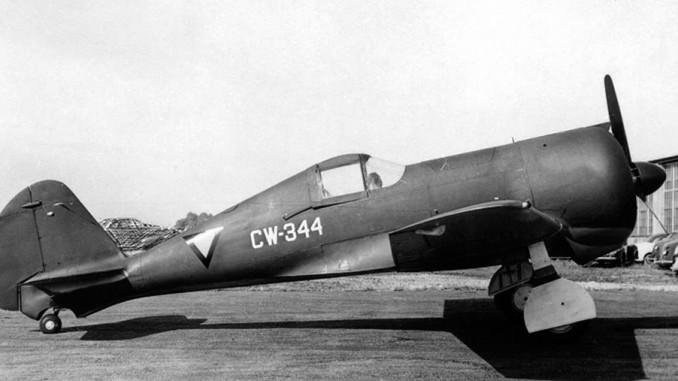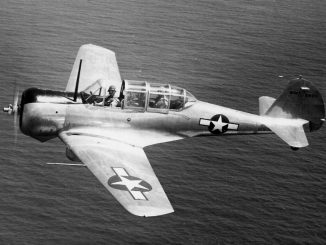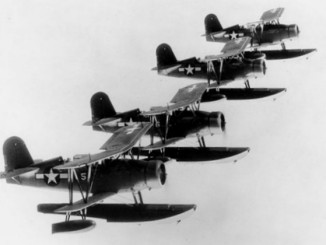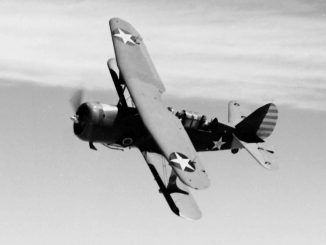
The Curtiss-Wright CW-21 was privately designed by the company in order to fulfil a perceived need for lightweight, fast-climbing interceptors on the international market. The USAAF had no need for aircraft of this type, so lead designer George A. Page was not encumbered by the requirements of the US military. The CW-21 was partly based on an older design, the CW-19 two-seat utility aircraft.
A low-winged monoplane fighter, the CW-21 otherwise featured few of the features that were being fitted as standard to USAAF fighters. For instance, the CW-21 eschewed self-sealing fuel tanks and pilot armour in order to keep weight to a minimum. Armament was relatively light, consisting of a pair of .30cal or .50cal machine guns only. The CW-21’s low weight meant that it had a climb rate rivalling most of the Japanese fighters that would constitute the interceptor’s opposition. The engine was essentially the same Wright R-1820 that powered the F2A Buffalo and the B-17 Flying Fortress.
An initial export order came from the Chinese Air Force in 1939. Curtiss test pilot Bob Fausel flew a demonstration machine during an air raid and shot down a Japanese Fiat BR.20 over Chungking in April 1939. An order for 27 disassembled aircraft followed, with these arriving in China during 1941. However, none was constructed as a Japanese offensive forced the abandonment of the Loiwing factory where the aircraft were to be completed.
The Dutch Air Force also showed interest in the improved CW-21B, placing orders for 24 aircraft also for delivery in 1941. However during the intervening period the Netherlands fell to Germany, so the aircraft were diverted to the Netherlands East Indies where they arrived in February 1941. The lightweight construction of the type led to structural issues which kept many of the fighters grounded, but a number were kept airworthy and these attempted to fend off Japanese air forces during the invasion of Java, scoring a few successes before the small force was wiped out.




As a grandson of Robert Faudel I grew up around things historical things I took for granted. My grandpa had to let his superior officers read his book prior to it’s publication. The majority which my grandma Irma and he did for the USA couldn’t be published and can’t be found on the internet, as it’s been removed. My grandpa was part of a team which included pilots from England. All had to fly all experimental fighters and fighter planes in service that both countries had in their line up. For those interested, there’s still a lot of information on the internet if you know where to look. At least one or two sources mention Catherine. That’s an error as Irma was by his side working for the DOD.